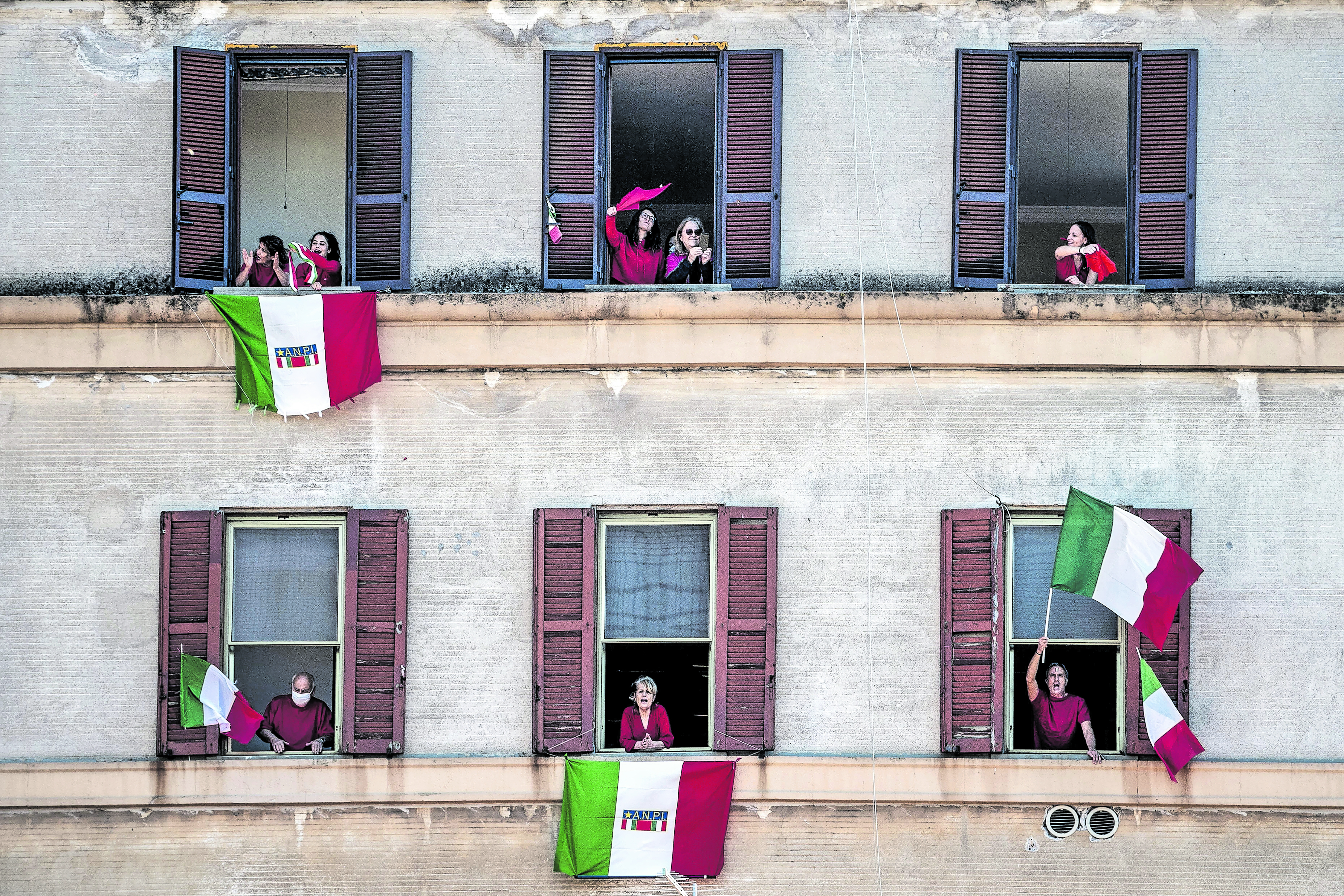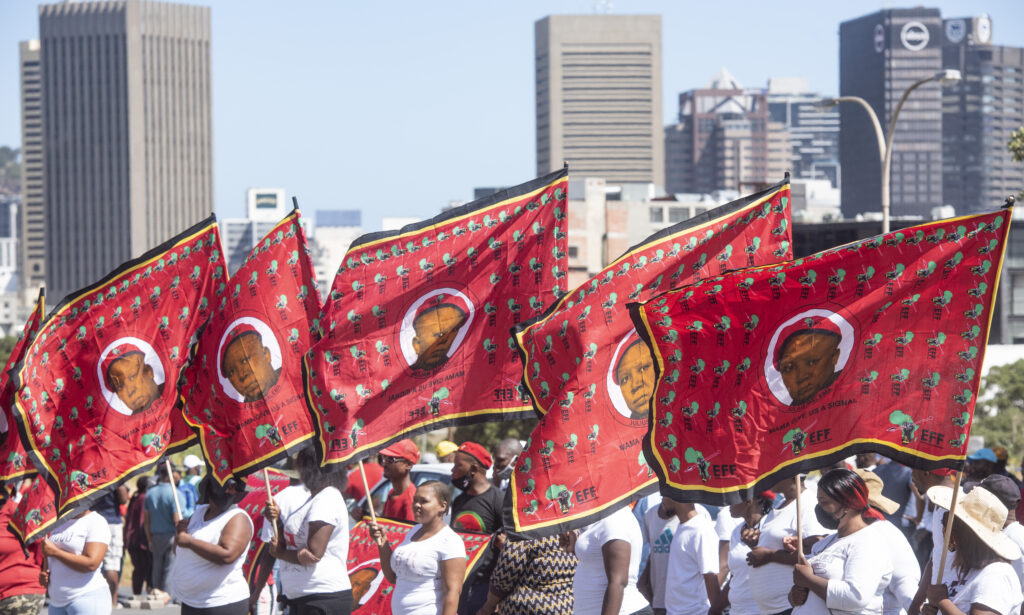This month marks the first anniversary of our descent into the murky pandemic world of uncertainty, bewilderment and fear.
One year has gone by, a year of masks and social distancing and silence and isolation and loneliness.
What we’ve been through in the past 12 months moved into stark relief as I watched a dramatised TV version of the devastation wreaked by the coronavirus.
I’ve watched the medical drama series set in rain-spattered Seattle, Grey’s Anatomy, since it first appeared on our television screens in 2005. Over 16 seasons of the show the characters have become old friends. And so, in Covid-19 times, it makes sense that the award-winning creator of the show, Shonda Rhimes, would script 2021’s season 17 around the pandemic. If anything, it should feel like the entire point of the hospital show has been waiting for just such a moment — to record an actual medical calamity that has affected the entire world.
And yet, for the first time, the show didn’t work; it felt stale — as if we’d already watched the scenes unfolding on the small screen. Déjà vu.
Rhimes chose to set the opening episodes in April 2020 — too recent to be classic viewing, and too recent, too, to have faded from our memories. It felt old hat and made for uncomfortable viewing of a time we’re living through.
There were images, in the first episode of people clapping and cheering on the doctors, nurses and firefighters who, at great risk to themselves, tirelessly fought to save lives. Erm … done that. Tick. There was the reference to how the shortage of personal protective equipment put frontline workers’ lives in danger. (A global phenomenon suffered by a world unprepared for a pandemic.)
It all felt so … mid-2020.
This month a year ago is when the horror of what was happening in the rest of the world became real to us. From early 2020, alarming images came through the ether from Wuhan, China, where people were made to remain in their homes; cruise ships filled with sick people hopelessly floated around the world, being refused entry at every port.
I remember an early March dinner party where the conversation turned to the foolishness of panic-stricken Australians stockpiling toilet paper. By the end of the month, with the announcement that we were going into hard lockdown to “flatten the curve”, our own stocks of loo paper began to dwindle on shop shelves.
On March 27, silence descended. Our world disappeared into eerie stillness for 35 days as we were ordered to stay home to save lives.
Silence. People scurried through shops at breakneck speed. Animals emerged from the urban wild and began to inhabit empty city spaces.
We stayed home and watched Tiger King on Netflix.
Generosity and splurges of good neighbourliness erupted as people tried to ease the burden of a newly virtual world.
New York’s Metropolitan Opera made its archive of recordings free on a host of channels. Museums around the world — The National and Tate Modern in London, the Museum of Modern Art, The Guggenheim and The Whitney in New York, Frida Kahlo in Mexico among them — allowed free virtual access to their art collections.
YouTube became a godsend resource for early morning Yoga with Adriene; 21 days of meditation with Deepak Chopra; understanding the full import of this “event” on a spiritual level from mystic Caroline Myss.
Instagram became the brag platform for people with newfound cooking skills.

Banana bread and sourdough bread became speciality lockdown baked goods of choice. Tips for sourdough starters, how to make them, how to share them came from TV chefs, among them Gordon Ramsay, Jamie Oliver and Curtis Stone. Bored people driven into the kitchen relentlessly posted images of their home-cooked meals. Around the world people gained an average 7kg in weight.
My phone rang, a lot, as my friends, concerned that I lived alone, called to check if I was all right, to share recipes, suggest Netflix series and interesting books.
A close friend who was in a bubble with her 92-year-old father went into full isolation, seeing nobody for six months. She had her groceries delivered and sanitised everything that entered her home.
For those of us who desperately needed human contact, clandestine trips were made to empty parking lots where we sat, our windows down, our cars the requisite distance apart, for in-person chats.
I lived for these furtive trysts.
Zoom became our virtual window to the world. I was the person in work meetings who, much to the amusement of my colleagues, physically put my hand up when I needed to ask a question (rather than press the hands up button). And amid much eye rolling, I had to constantly be reminded to unmute myself.
Few people got out of their pyjamas during lockdown. Where was the point? You weren’t going anywhere.
Zoom. I virtually went to mass on Sunday mornings; attended two weddings; ate lunch with friends around the world, went to a 60th birthday party where the friend danced sadly on her own while we all watched. I’ve been to book launches and seminars, covered two conferences — all on virtual platforms like Zoom or Whova or Teams.
The saddest of it was attending the funeral of a distant cousin on Zoom. Only his immediate family, masked and socially distanced, were allowed to be there. His body had been sealed in two bags and none of the Indian rituals performed on the dead were allowed, something that shattered his already distraught mother.
Parents complained, bitterly, that home schooling was indescribably hard; that and keeping young children occupied, indoors.
The New York Times ran a hotline in which home-bound parents could call in and vent. Mostly mothers rang in and sobbed/screamed/told tales of horror that were broadcast on Instagram.
Many, many marriages fell apart. My mother used to say that nothing bears up well under intense scrutiny. Being stuck with your spouse 24/7 could be construed as living under a microscope.
But there was so much kindness. People made sandwiches and drove around handing them out to people at traffic lights. Neighbours shopped for older people. Friends dropped food off at the door of those who feared exposure to infection had to self-quarantine.
And all the while, throughout the country — throughout the world — there was deep anxiety; the uncertainty of what was in store. Businesses closed down, jobs were lost. Poverty, claustrophobic incarceration, unemployment and loneliness led to depression, despair and fear.
And death. So much death.
And sorrow. Deep, deep sorrow.
Who would want to be reminded of 2020?
If our waking lives were not hard enough, Covid dreams became a recognisable thing during this past year. So many people reported having strange dreams that several universities set about researching the phenomenon.
Still, there were lighter moments that marked my early pandemic memories, mostly of the Italians, who seemed to be hardest hit at that stage, gathered on apartment balconies singing opera, or playing tennis high up in the sky, across empty streets below.
Their pot banging and clapping to acknowledge and cheer on frontline workers started a craze that went round the world like a Mexican Wave.
Within a few weeks, it ended up in my apartment block in Killarney where people clapped for a full five minutes at 7pm every evening during the first hard lockdown.
Now, one year on, 2.5-million people around the world have died. Here at home, there has been an appreciable drop in the number of new infections and deaths.
But there’s a new threat that promises to separate the world into Us and Them: the introduction of the vaccine passport.
By the end of February, the Financial Times estimated, about 235-million vaccines had been administered worldwide. There are eight billion people on the planet so we’re nowhere near safe yet.
Here at home about 85 000 people have been vaccinated. Our population is about 60-million, so we’ve a way to go.
We’re on the back foot again as we wait for our vaccines to arrive and be administered.
I’ve not moved outside of a 10km radius of my home since New Year 2019 and I am riddled with cabin fever. I’ve had to resign myself to the possibility that I won’t be able to visit my beloved New York for a while.
We have been told that we will have to continue wearing masks, social distancing and sanitising or washing our hands for at least another two years. Which brings me to questions on the new etiquette:
- How do we deal with other people’s intense fears, especially when they affect us?
- How do we tell people to wear their mask correctly without causing offence?
- How do you deal with a dinner invite, ostensibly for six, outdoors in a well-ventilated courtyard that becomes dinner for 10 indoors? Stay or go?
- Can you keep your mask on when you’re at dinner at someone’s house?
- How to let people know that a buff — a single layer of thin fabric — is not sufficient protection and you feel uncomfortable?
- Possibly worst: how do you deal with the anti-vaxxers, those who think Covid-19 is a drummed-up hoax (by Bill Gates who wants world domination, they say)?
- How do you respond to people proclaiming they will not take the vaccine, influencing impressionable people around them to follow suit?
- Then there are the selfless friends who help out at shelters; or those who insist on flying between provinces. How do you let them know, kindly, that you don’t want to see them because you think they’re over exposed?
- There’s also the problem of being the only person at the office who does not want to attend in-person meetings. Do you cave in when the eye rolling begins or hold out and insist on being informed on Zoom?
This new pandemic season — there are more questions than answers.



